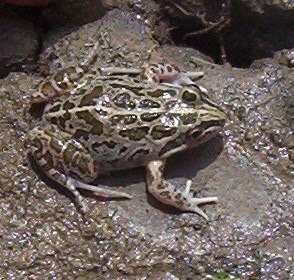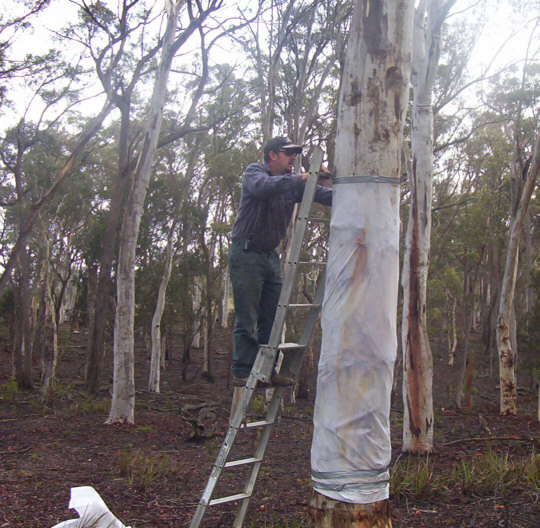
Wild Windellama
by Paul Alessi
March 2007
Spotted Marsh Frogs
Now that we've had a bit of rain
the frogs can all be happy again but
last month they were in hiding, our kids love to swim in one of
the dams
and discovered that by tipping buckets of water on the dam wall
they could make frogs
rise out of the large cracks in the mud.
These frogs were easily identified as Limnodynastes
tasmaniensis (commonly known as
Spotted Marsh Frogs) According to internet sources these frogs
are often associated with water
and before you say "so what" bear in mind many frog
species inhabit trees.
Spotted Marsh Frogs are pale
salmon to fawny pink in colour and the spots olive green,
sometimes with a
stripe down their back. They are also one of our most common
frogs, they are usually
between 30 and 48mm in length and have a large area of
distribution with the extemities roughly
being Townsville to Hobart to Adelaide.
The males hide in floating
vegetation calling to their females and the calls can vary from
place to place from a kuk-kuk-kuk to a click or plop sound.

Tree Scribblers Caught ?
The Scribbly Gum Moth trap was
taken down last week and sent off to the CSIRO,
watch this column as we will be exposing who is making the
scribbles on our gum trees.

Dragonfly Trivia
There seem to be plenty of
dragonflies about at the moment, one escorted me down the road
the other day flying alonside the tractor and seemed to be
interested in what I was doing which
in turn got me curious about Dragonflies.
They are fascinating creatures,
some can travel up to 100 kmh, hover or even fly
backwards, they can spot a mosquito at a range of 6 metres and
then fly along holding
all six legs to form a basket in which they scoop up their prey,
this is then eaten while they are still flying.
They also mate in the air which
I guess most of you will have seen at one time or another.
The females drop their eggs into water, within weeks nymphs hatch
from
these eggs and live in the water from 1 to 5 years, they emerge
from the nymph to become a Dragonfly but this last stage of their
life is fairly short.
In ancient times there were
species of Dragonfly with wing spans of up to 2 1/2 feet (76cm)
One large species of Dragonfly Petalura gigantea still survives in NSW, much of it's habitat has
been lost or altered and it once inhabited swamps in Sydney and
Cronulla, it can still be found in
isolated parts of eastern NSW including the Wingecarribee Swamp
near Moss Vale and
has a wingspan up to 140mm ( over 5 inches)

Copyright Paul Alessi 2007